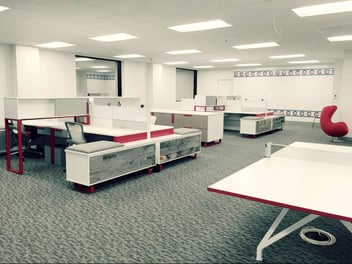Promote Occupational Health: Ergonomic Analysis of the Workplace
At Gebesa, we care about the well-being of our team members and the creation of healthy and productive workspaces. That's why today we bring you a complete guide to conduct an ergonomic analysis of your workstation.
What is an ergonomic analysis?
An ergonomic analysis is a process that allows the evaluation of the interaction between personnel, workstations, and the environment. Its objective is to identify and correct risk factors that may affect the worker's health, safety, and productivity.
Why is it important to conduct an ergonomic analysis?
An ergonomic analysis can help you:
- Prevent injuries: Ergonomic risk factors can lead to musculoskeletal injuries, fatigue, stress, and other health problems. An ergonomic analysis will help you identify and correct these factors before they cause issues.
- Increase productivity: An ergonomic workspace can improve comfort and efficiency, resulting in higher productivity.
- Reduce absenteeism: Work-related health problems can lead to increased absenteeism. An ergonomic analysis can help you reduce absenteeism and associated costs.
How to conduct an ergonomic analysis?
.webp?width=1200&height=700&name=oficinas-modernas%20(1).webp)
An ergonomic analysis can be conducted in five steps:
- Observe the team member while they perform their work. Pay attention to their posture, movements, and interaction with the environment. This meticulous observation serves as a critical foundation for identifying any potential areas of improvement in ergonomics.
- Interview the colleague to gather their opinions about their workstation. Ask them about their comfort, fatigue, and potential health problems. Through these dialogues, delve into their subjective experiences regarding comfort levels, fatigue, and any latent health issues they may have encountered, thus enriching the depth of understanding regarding ergonomic challenges.
- Measure the physical factors of the workstation, such as desk height, monitor position, and noise level. By quantifying these variables, acquire a detailed understanding of the tangible aspects that contribute to ergonomic comfort and potential risk factors within the workspace.
- Analyze the collected information to identify ergonomic risk factors. Through meticulous examination, identify patterns, correlations, and potential ergonomic vulnerabilities, thus laying the groundwork for informed decision-making in risk mitigation strategies.
- Develop recommendations to correct ergonomic risk factors. These tailored interventions serve as proactive measures to foster a conducive work environment that prioritizes the well-being, safety, and productivity of every team member.
.webp?width=1200&height=700&name=estacion-de-trabajo-ergonomica%20(1).webp)
At Gebesa, we offer a wide range of ergonomic office furniture to help you create a healthy and productive workspace. Contact us for more information.
Remember: An ergonomic analysis is an investment in the health and well-being of employees. By conducting an ergonomic analysis, you can improve your company's safety, productivity, and employee satisfaction.





